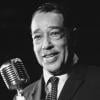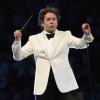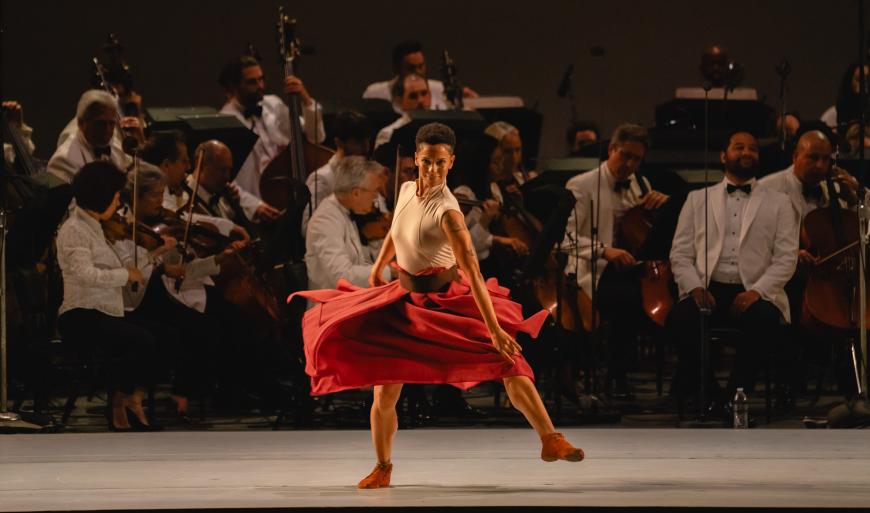
It’s 5:45 p.m. on a perfect Tuesday evening. The gates of the Hollywood Bowl will open soon, and there’s already a long line of cheerful pre-music picnickers.
The concert by the Los Angeles Philharmonic and conductor Gustavo Dudamel promises an abundance of Latin and South American spirit and is the latest installment of the orchestra’s Pan-American Music Initiative. Francisco Cortés-Álvarez’s La Serpiente de Colores (The multicolored snake), an LA Phil commission, leads to Arturo Márquez’s Concierto de Otoño (Autumn concerto) from 2018, here in its first LA Phil performance and featuring the thrilling Venezuelan trumpeter Pacho Flores. The second half will be devoted to a complete performance of Alberto Ginastera’s 1941 ballet of the Pampas, Estancia, danced by the 21 members of Brazil’s Grupo Corpo as choreographed by Rodrigo Pederneiras.
Not long ago, the Bowl was a ghost town, and to watch it fill with 11,000 spectators was a joyous experience, as if the pandemic years had been nothing more than a bad dream.
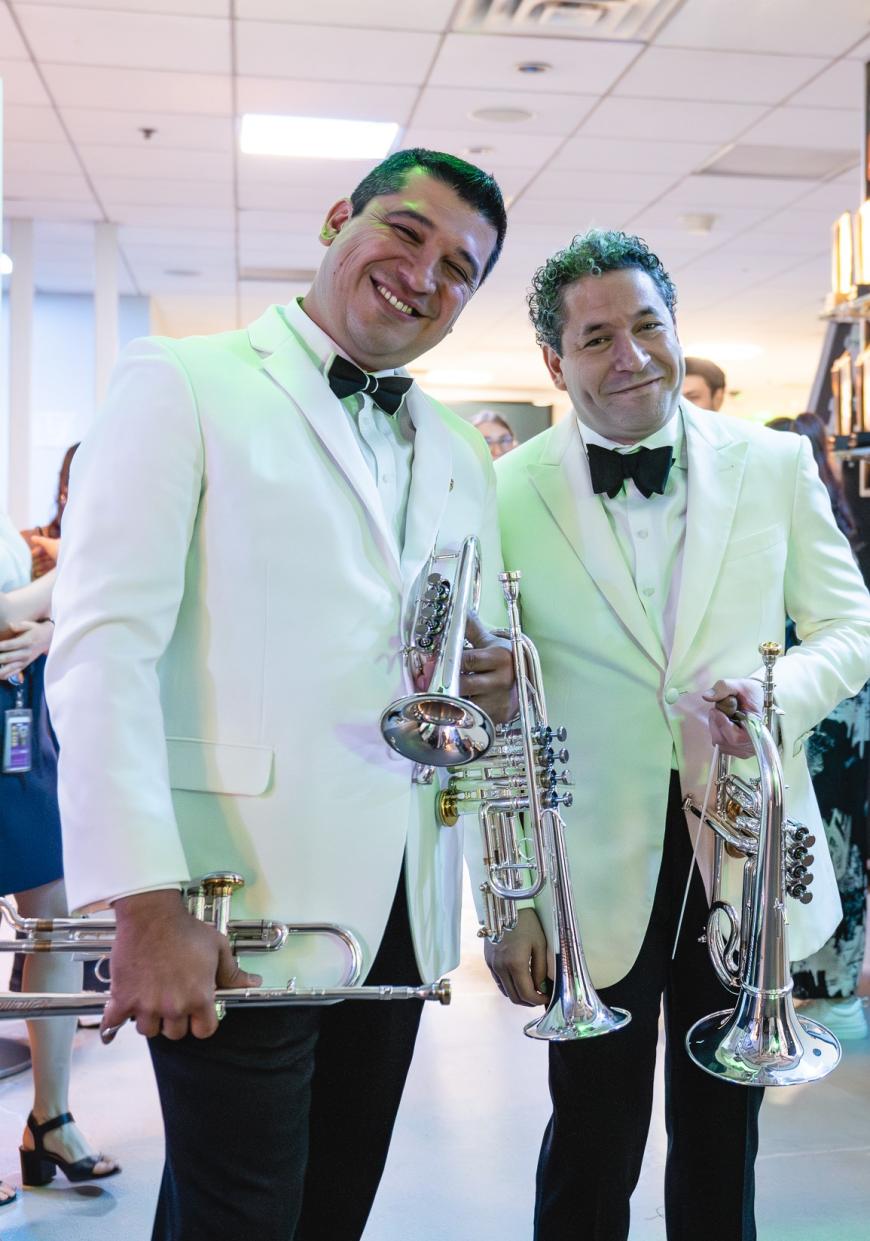
To get a sense of Cortés-Álvarez’s eight-minute La Serpiente de Colores (which had its LA Phil premiere in 2022, conducted by Dudamel), imagine a more socially conscious Mexican version of Fafner from Richard Wagner’s The Ring of the Nibelungs, one who cares about humanity and dispenses goodness instead of greed. As the piece opens, we find the great rainbow-hued rattlesnake snoozing in a subterranean realm of grumbling low-string sonorities. But when the great serpent awakens, so does the orchestra. There are flute-fluttering butterflies, leading to a fiesta of dancing and clanging rhythms. It all climaxes in a grand crescendo followed by a long reptilian hiss.
There are pieces other than warhorses that deserve a place in the Bowl’s repertory. Márquez’s Concierto de Otoño is just such a piece, ideally performed by Flores, the trumpet master for whom it was composed. Rarely has a new work at the Bowl been so immediately embraced.
Márquez has a unique family and musical history. He was born in Mexico; moved with his family to La Puente, California, when he was a teenager; moved back to Mexico, where he enrolled in the Conservatory of Music and the Institute of Fine Arts; went to Paris, where he studied with Jacques Castérède; and returned to Los Angeles to attend CalArts in Valencia, where he worked with Morton Subotnick and Mel Powell.
His trumpet concerto, however, is far from an academic exercise, except in the virtuosic requirements it places on its soloist, who, over the course of three movements (“Son de luz,” “Balada de floripondios,” and “Conga de flores”), is required to perform on four different trumpets, including a flugelhorn and a soprano cornet (in F).
The trumpet, as described by the composer, represents the “heart of Mexico.” And in this concerto, he captures its moods and cultural references — from the trumpet blast that signals the entrance of the bull into the arena to the romance of shadowy moonlight (with hints of Joaquín Rodrigo’s Concierto de Aranjuez) to the exuberantly swaying rhythms of the conga, topped off with pyrotechnical cadenzas.
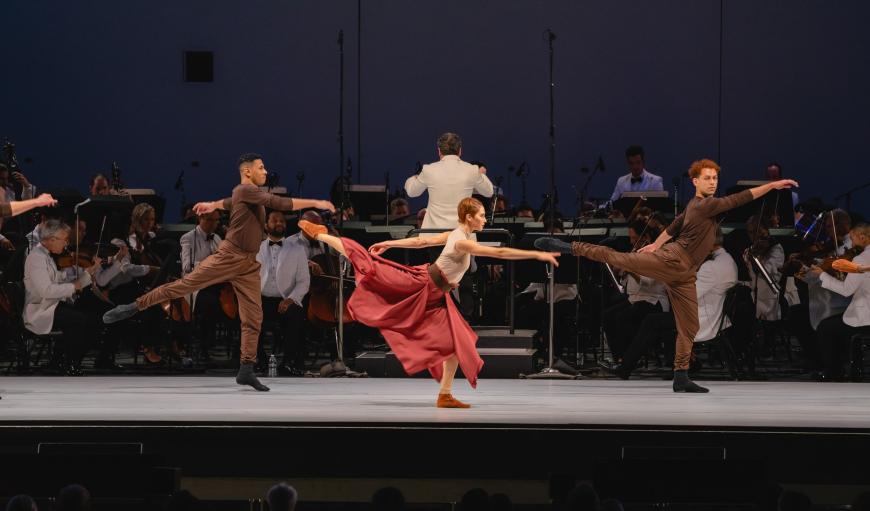
In the 20th century, ballet emerged as a significant medium for composers. Collaborations between Igor Stravinsky and Vaslav Nijinsky, Aaron Copland and Agnes de Mille, and Copland and Martha Graham yielded landmark works. This creative surge stimulated Ginastera to compose Estancia, commissioned by Lincoln Kirstein for American Ballet Caravan, which also commissioned Copland and de Mille’s Billy the Kid (1938). The company disbanded before the premiere of Estancia, which eventually took place in 1952 at the Teatro Colón in Buenos Aires.
Based on the epic poem Martín Fierro by José Hernández, the ballet’s story is about a lone gaucho who falls madly in love with the estancia (ranch) owner’s daughter. It ends badly, reminiscent of the plot line that drives Cormac McCarthy’s All the Pretty Horses. The tale is narrated and sung by a baritone; in Tuesday’s performance this was the resounding voice and presence of Gustavo Castillo.
Pederneiras’s choreography plays to the strengths of Grupo Corpo, combining balletic flow, precision of line, and endless extensions with an earthbound sense of rootedness in the piece’s folkloric roots.
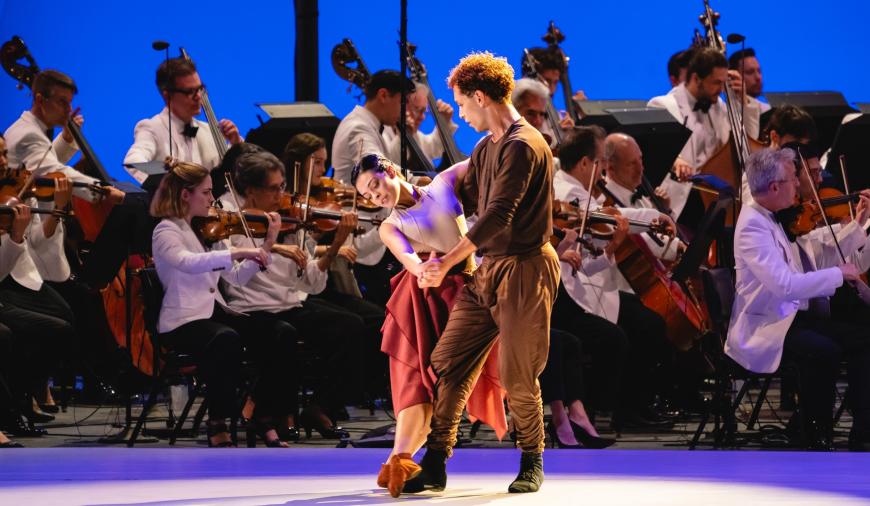
Rather than casting a single pair of dancers as the lovers, Pederneiras divides the lovers’ romantic encounters (and heartrending separation) into a series of pas de deux featuring three pairs of lovers. The effect is not only mesmerizing but contrasts perfectly with the full forces in the “Wheat Dance,” “The Land Workers,” “The Ranch Hands,” and “The Townspeople,” all leading to the climactic “Malambo.”
Ginistera’s score is wide-ranging in its instrumental coloration and cinematic sweep, meant to depict the vast Argentine landscape of the Pampas. It was a perfect fit for the orchestra, conductor, and outdoor venue.


